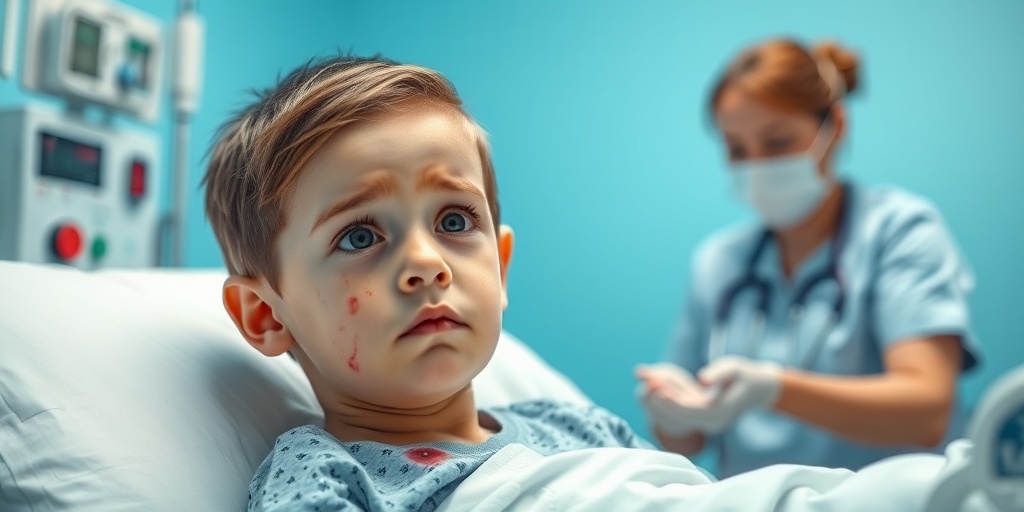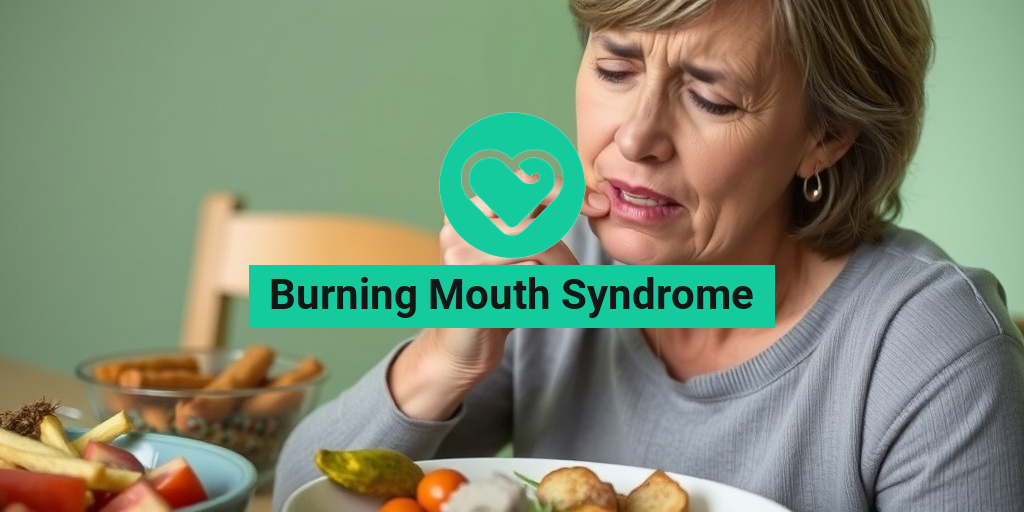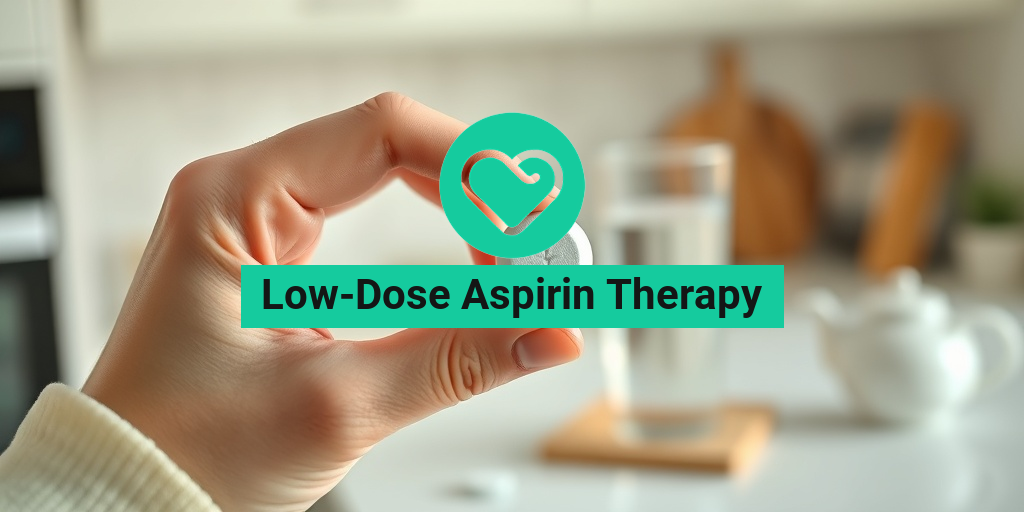What Is Chickenpox?
Chickenpox, also known as Varicella, is a highly contagious viral infection caused by the varicella-zoster virus (VZV). This illness is characterized by an itchy rash and flu-like symptoms. While chickenpox is often considered a childhood disease, it can affect individuals of any age who have not been vaccinated or previously infected.
The virus spreads easily through respiratory droplets when an infected person coughs or sneezes, as well as through direct contact with the fluid from chickenpox blisters. Once contracted, the virus remains dormant in the body and can reactivate later in life, leading to shingles, a painful rash that can occur in older adults.
Understanding chickenpox is crucial, especially for parents and caregivers, as it can lead to complications in certain populations, including infants, pregnant women, and individuals with weakened immune systems. Vaccination has significantly reduced the incidence of chickenpox, making it less common than in previous decades.
Chickenpox Symptoms
The symptoms of chickenpox typically appear 10 to 21 days after exposure to the virus. The initial signs can be mild and may include:
- Fever: A mild to moderate fever often accompanies the onset of chickenpox.
- Fatigue: Many individuals feel unusually tired or lethargic.
- Loss of appetite: A decrease in appetite is common during the early stages.
- Headache: Some may experience mild headaches.
As the illness progresses, the hallmark symptom of chickenpox emerges: a distinctive itchy rash. This rash typically develops in several stages:
Stages of the Chickenpox Rash
- Macules: Small red spots appear on the skin.
- Papules: The spots develop into raised bumps.
- Vesicles: The bumps fill with fluid, forming blisters.
- Crusts: Eventually, the blisters break and crust over, forming scabs.
The rash usually starts on the face, chest, and back before spreading to other parts of the body. It can be quite itchy, leading to discomfort and the potential for secondary infections if the blisters are scratched.
When to Seek Medical Attention
While chickenpox is generally mild in healthy children, it can lead to complications in some cases. It’s important to seek medical attention if you notice:
- Severe symptoms: High fever, difficulty breathing, or severe headache.
- Signs of infection: Redness, swelling, or pus around the blisters.
- Dehydration: Inability to keep fluids down or signs of dehydration.
For those at higher risk, such as pregnant women or individuals with compromised immune systems, consulting a healthcare provider is essential for proper management and care.
In conclusion, chickenpox (varicella) is a common viral infection that can be effectively managed with proper care and vaccination. If you have further questions or need evidence-based health answers, consider visiting Yesil Health AI for reliable information. Stay informed and take care of your health! 🌟

Chickenpox Transmission
Chickenpox, also known as Varicella, is a highly contagious viral infection caused by the varicella-zoster virus. Understanding how chickenpox spreads is crucial for preventing outbreaks and protecting vulnerable populations. Let’s dive into the various ways this virus can be transmitted.
Direct Contact with Rash
The most common way chickenpox spreads is through direct contact with the fluid from the blisters of an infected person. When someone with chickenpox scratches their rash, the virus can be released into the air or onto surfaces, making it easy for others to contract the virus. This is why it’s essential to avoid close contact with someone who has an active rash. 🦠
Airborne Transmission
Chickenpox can also be transmitted through the air. When an infected person coughs or sneezes, tiny droplets containing the virus can linger in the air for several hours. If someone else breathes in these droplets, they can become infected, even if they are not in direct contact with the infected individual. This airborne transmission is particularly concerning in crowded places, such as schools or daycare centers.
Contagious Period
Individuals with chickenpox are contagious from about 1 to 2 days before the rash appears until all the blisters have crusted over, which typically takes about 5 to 7 days. During this time, it’s crucial to minimize contact with others, especially those who are at higher risk of severe complications, such as pregnant women, newborns, and individuals with weakened immune systems.
Indirect Contact
While less common, chickenpox can also spread through indirect contact. This can happen if someone touches a surface or object that has been contaminated with the virus, such as clothing or bedding used by an infected person. Although the virus does not survive long outside the human body, it’s still a good practice to wash hands frequently and disinfect surfaces to reduce the risk of transmission.
Chickenpox Risk Factors
While anyone can contract chickenpox, certain factors can increase the likelihood of infection. Understanding these risk factors can help in taking preventive measures. Here are some key risk factors associated with chickenpox:
Age
Children under the age of 12 are at a higher risk of contracting chickenpox, as they have not yet been vaccinated or may not have been exposed to the virus. The majority of chickenpox cases occur in children, but adults can also get infected, often experiencing more severe symptoms. 🧒👩🦳
Lack of Vaccination
The chickenpox (varicella) vaccine is highly effective in preventing the disease. Individuals who have not received the vaccine are at a significantly higher risk of contracting chickenpox. Vaccination is recommended for all children, and adults who have never had chickenpox should also consider getting vaccinated to protect themselves and others.
Weakened Immune System
People with weakened immune systems, such as those undergoing chemotherapy, taking immunosuppressive medications, or living with conditions like HIV/AIDS, are at a greater risk for severe chickenpox. Their bodies may not be able to fight off the virus effectively, leading to complications.
Close Contact with Infected Individuals
Being in close proximity to someone who has chickenpox significantly increases the risk of transmission. This is particularly true in settings like schools, daycare centers, and households where children frequently interact. If someone in your household has chickenpox, it’s essential to monitor other family members for symptoms and take preventive measures.
Pregnancy
Pregnant women who have not had chickenpox or the vaccine are at risk of contracting the virus, which can lead to serious complications for both the mother and the unborn child. If a pregnant woman is exposed to chickenpox, she should contact her healthcare provider immediately for guidance and possible treatment options.
In summary, understanding the transmission and risk factors associated with chickenpox (varicella) is vital for prevention and management. By being aware of how the virus spreads and who is most at risk, we can take proactive steps to protect ourselves and our communities. 🌍

Chickenpox Diagnosis
Diagnosing chickenpox (varicella) typically involves a combination of observing the characteristic symptoms and conducting a physical examination. This viral infection, caused by the varicella-zoster virus, is most commonly seen in children but can affect individuals of any age. Understanding how chickenpox is diagnosed can help you recognize the signs early and seek appropriate care.
Recognizing the Symptoms
The first step in diagnosing chickenpox is recognizing its symptoms. The most common signs include:
- Itchy Rash: The hallmark of chickenpox is a red, itchy rash that usually starts on the face, chest, and back before spreading to other parts of the body.
- Blisters: The rash progresses to small, fluid-filled blisters that eventually crust over.
- Fever: A mild to moderate fever often accompanies the rash, typically ranging from 100°F to 102°F (37.8°C to 38.9°C).
- Fatigue: Many individuals experience fatigue and a general feeling of malaise.
- Loss of Appetite: A decrease in appetite is common during the early stages of the infection.
Physical Examination
A healthcare provider will conduct a physical examination to confirm the diagnosis. They will look for the characteristic rash and blisters, which are key indicators of chickenpox. In some cases, especially in adults or individuals with atypical presentations, additional tests may be necessary.
Laboratory Tests
While a physical examination is often sufficient for diagnosis, laboratory tests can be performed to confirm the presence of the varicella-zoster virus. These tests may include:
- Polymerase Chain Reaction (PCR): This test detects the virus’s genetic material and is highly accurate.
- Direct Fluorescent Antibody (DFA) Test: This test identifies the virus in skin lesions.
- Serology: Blood tests can check for antibodies to the varicella-zoster virus, indicating past infection or vaccination.
Early diagnosis is crucial for managing symptoms and preventing complications, especially in high-risk populations such as pregnant women, newborns, and individuals with weakened immune systems. If you suspect chickenpox, consult a healthcare provider promptly. 🩺
Chickenpox Complications
While chickenpox is often considered a mild childhood illness, it can lead to serious complications, particularly in certain populations. Understanding these potential complications is essential for effective management and prevention.
Common Complications
Some of the most common complications associated with chickenpox include:
- Secondary Bacterial Infections: The blisters can become infected with bacteria, leading to skin infections that may require antibiotics.
- Pneumonia: Chickenpox can cause viral pneumonia, particularly in adults and individuals with compromised immune systems.
- Encephalitis: In rare cases, the virus can cause inflammation of the brain, leading to neurological symptoms.
- Dehydration: Fever and loss of appetite can lead to dehydration, especially in young children.
High-Risk Groups
Certain groups are at a higher risk for developing complications from chickenpox:
- Pregnant Women: Chickenpox during pregnancy can lead to serious complications for both the mother and the baby.
- Newborns: Infants who contract chickenpox are at risk for severe illness.
- Immunocompromised Individuals: Those with weakened immune systems due to conditions like HIV/AIDS or cancer treatments are more susceptible to severe complications.
Preventing Complications
The best way to prevent complications from chickenpox is through vaccination. The chickenpox (varicella) vaccine is highly effective in preventing the disease and its associated complications. Vaccination not only protects the individual but also helps to reduce the spread of the virus in the community. 💉
If you or someone you know is at risk for complications from chickenpox, it’s essential to discuss vaccination and preventive measures with a healthcare provider. Early intervention can significantly reduce the risk of severe outcomes. 🌟

Chickenpox Treatment
Chickenpox, also known as Varicella, is a highly contagious viral infection characterized by an itchy rash and flu-like symptoms. While the disease is generally mild in children, it can lead to complications in adults and individuals with weakened immune systems. Understanding the treatment options available can help manage symptoms and promote recovery.
Symptom Management
The primary goal of chickenpox treatment is to alleviate symptoms. Here are some effective strategies:
- Antihistamines: Over-the-counter antihistamines, such as diphenhydramine (Benadryl), can help reduce itching and discomfort associated with the rash.
- Calamine Lotion: Applying calamine lotion to the affected areas can soothe the skin and provide relief from itching.
- Cool Baths: Taking cool baths with added baking soda or colloidal oatmeal can help calm irritated skin and reduce itching.
- Pain Relievers: Acetaminophen (Tylenol) can be used to relieve fever and pain. However, avoid aspirin, as it can lead to serious complications in children.
Medications for Severe Cases
In some instances, especially for adults or those with weakened immune systems, antiviral medications may be prescribed. These include:
- Acyclovir: This antiviral drug can help reduce the severity and duration of chickenpox if taken within the first 24 hours of the rash appearing.
- Valacyclovir: Similar to acyclovir, this medication can also be effective in treating chickenpox in certain populations.
When to Seek Medical Attention
While most cases of chickenpox resolve without complications, it’s essential to monitor for signs of severe illness. Seek medical attention if you notice:
- Difficulty breathing or chest pain
- Severe headache or confusion
- High fever that persists
- Signs of infection in the rash, such as increased redness, swelling, or pus
Chickenpox Prevention
Preventing chickenpox is crucial, especially for those who are at higher risk of complications. The most effective way to prevent chickenpox is through vaccination.
The Chickenpox Vaccine
The chickenpox (varicella) vaccine is a safe and effective way to protect against the virus. Here are some key points about the vaccine:
- Recommended Schedule: The vaccine is typically given in two doses: the first dose at 12-15 months of age and the second dose at 4-6 years of age.
- Effectiveness: The vaccine is about 90% effective at preventing chickenpox and significantly reduces the severity of the disease in those who do contract it.
- Catch-Up Vaccination: Older children and adults who have not been vaccinated can receive the vaccine, which is especially important for those who are at risk of severe disease.
Other Preventive Measures
In addition to vaccination, there are other strategies to prevent the spread of chickenpox:
- Avoiding Close Contact: Keep away from individuals who have chickenpox or shingles, as the virus can spread through respiratory droplets and direct contact with the rash.
- Good Hygiene Practices: Regular handwashing and maintaining cleanliness can help reduce the risk of infection.
- Isolation: If someone in your household has chickenpox, they should stay home and avoid contact with others until all blisters have crusted over.
By understanding the treatment options and preventive measures for chickenpox (varicella), you can help protect yourself and your loved ones from this contagious disease. 🌟

Frequently Asked Questions about Chickenpox (Varicella)
What is Chickenpox (Varicella)?
Chickenpox, also known as Varicella, is a highly contagious viral infection characterized by an itchy rash, fever, and fatigue. It is caused by the varicella-zoster virus.
How does Chickenpox spread?
Chickenpox spreads easily from person to person through respiratory droplets when an infected person coughs or sneezes. It can also spread through direct contact with the rash or blisters of an infected individual.
What are the symptoms of Chickenpox?
- Itchy rash: Begins as small red spots that develop into fluid-filled blisters.
- Fever: Often mild to moderate.
- Fatigue: General tiredness and malaise.
- Loss of appetite: May occur in some individuals.
Is Chickenpox the same as Varicella?
Yes, Chickenpox and Varicella refer to the same condition. The term “Varicella” is the medical name for the disease caused by the varicella-zoster virus.
What is the Chickenpox (Varicella) vaccine?
The Chickenpox vaccine is a safe and effective way to prevent the disease. It is typically given in two doses, with the first dose administered between 12 and 15 months of age and the second dose between 4 and 6 years of age.
Can you get Chickenpox more than once?
While it is rare, it is possible to get Chickenpox more than once. This can occur if the initial infection did not provide long-lasting immunity or if the virus reactivates later in life, leading to shingles.
What is the difference between Chickenpox and Varicella Zoster?
Chickenpox refers to the initial infection caused by the varicella-zoster virus, while Varicella Zoster is the virus itself. After the initial infection, the virus can remain dormant in the body and may reactivate later as shingles.
How can Chickenpox be treated?
There is no specific treatment for Chickenpox, but symptoms can be managed with:
- Antihistamines: To relieve itching.
- Calamine lotion: To soothe the skin.
- Pain relievers: Such as acetaminophen for fever and discomfort.
When should I see a doctor for Chickenpox?
You should consult a healthcare provider if you or your child experience severe symptoms, such as high fever, difficulty breathing, or if the rash appears infected.
Can Chickenpox be prevented?
Yes, the best way to prevent Chickenpox is through vaccination. The Chickenpox vaccine is highly effective in preventing the disease and its complications.
Is Chickenpox contagious?
Yes, Chickenpox is highly contagious. An infected person can spread the virus from about 1 to 2 days before the rash appears until all the blisters have crusted over.
What are the complications of Chickenpox?
While most cases of Chickenpox are mild, complications can occur, especially in infants, adults, and individuals with weakened immune systems. Possible complications include:
- Infection: Bacterial infections of the skin.
- Pneumonia: Inflammation of the lungs.
- Encephalitis: Inflammation of the brain.
Conclusion
Understanding Chickenpox (Varicella) is essential for prevention and management. If you have further questions or concerns, consult a healthcare professional for personalized advice.




